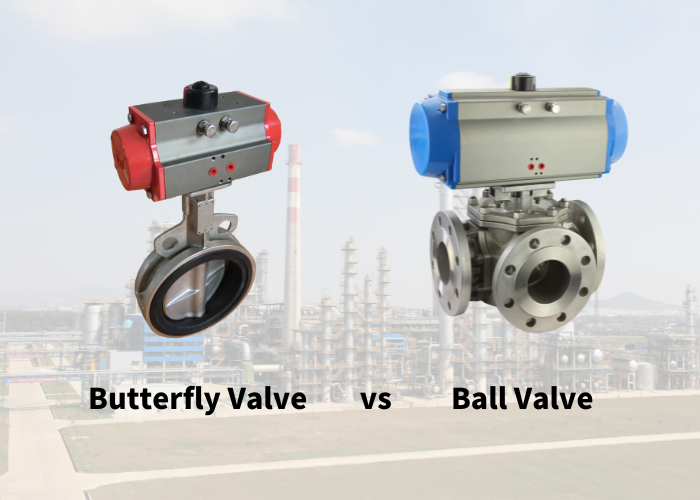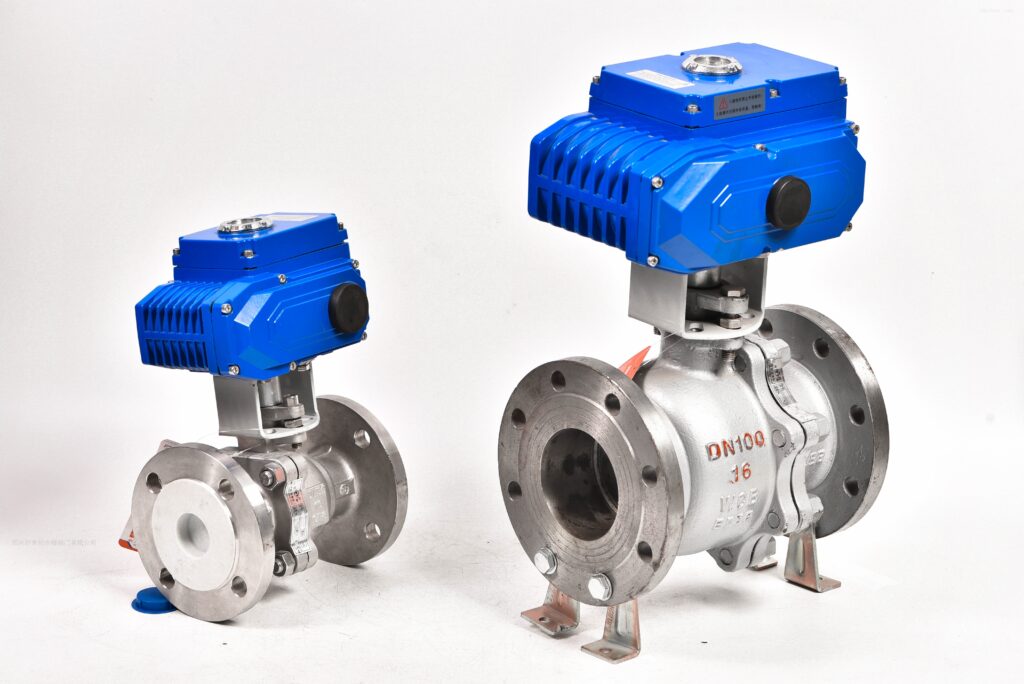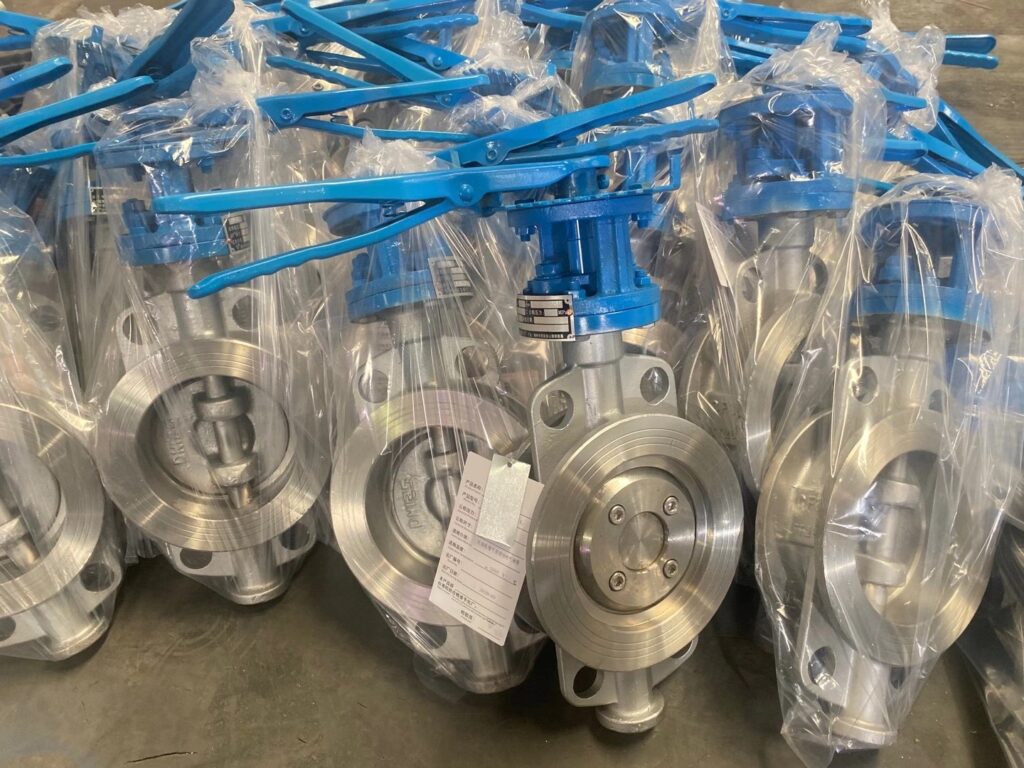
Welcome to our blog where we dive into the world of industrial valves and explore a fundamental choice that engineers and operators often face: Butterfly Valve vs. Ball Valve. In the intricate web of fluid control systems, these two valves stand out as versatile contenders, each with its unique set of advantages and applications.
Whether designing a complex piping system for a chemical plant, a water treatment facility, or even a simple residential plumbing setup, understanding the differences between butterfly and ball valves is crucial. In this blog, we’ll break down the key characteristics of both valve types, highlighting their strengths, weaknesses, and the scenarios in which they excel.
So, if you’re ready to gain a deeper understanding of these essential components in fluid control, read on to discover which valve might be the best fit for your specific needs. Whether you’re a seasoned engineer or just starting to explore the world of valves, this comparison will shed light on the Butterfly Valve vs. Ball Valve debate and help you make informed decisions for your projects.
Ball Valve
Ball valves are quarter-turn, on/off valves that control liquid or gas media flow. As the name implies, they rely on a hollow pivoting ball, which rotates 90° to halt or allow media to pass through the port (or bore).
Ball valves can be operated automatically or manually; they can be powered by pneumatic, hydraulic, or electric power or operated manually, most often by a lever handle. The position of this lever indicates whether or not the valve is open or closed. Ball valves provide a speedier alternative to valves that require a full turn or numerous revolutions to achieve their open or closed positions.
One- or two-way ball valves have a single port through the center of the ball, while multi-port ball valves are available for applications that require media diversion (or selection) in various directions or that handle media from many sources in the pipe system. Full-port, standard-port, reduced-port, and V-port ball valves are all available. There are also other body styles to pick from, including 1-piece, 2-piece, and 3-piece bodies.
Most ball valves can operate in relatively high-pressure environments and in a wide media temperature range with minimal pressure drop.
When to Use Ball Valves?
Ball valves are widely utilized in a wide range of industrial and residential applications due to their durability, adaptability, quick cycle time, and leak-tight seal. They can handle both fluid and gas media and enable process pigging, a cleaning method that involves pumping a device known as a pig through pipes to clean them. Despite its versatility, ball valves are not suggested for control applications requiring extremely accurate flow control.
Ball valves can be found in the following industries and applications’ pipe systems:
§ Oil & gas
§ Petroleum refining
§ Food & beverage
§ Automotive
§ Vehicle wash systems
§ Power processing
§ Pharmaceutical
§ Chemical admixtures & treatment
§ Irrigation & water treatment equipment
§ Manufacturing facilities

Butterfly Valve
Named for their resemblance to a butterfly’s wings, butterfly valves are similar to ball valves in that they are on/off quarter-turn valves. However, butterfly valves have a disc that vertically bisects the valve cavity instead of a perforated ball. They are available in one- and two-piece designs; in the one-piece version, the disc will rotate vertically to allow media to pass. The halves of the disc bend toward each other (like a butterfly) in the two-piece variant to allow media to pass through.
Like ball valves, butterfly valves can be actuated automatically or manually via a level or handwheel. Butterfly valves are not suitable for applications requiring precise control.
Butterfly valves are often thought to be lighter than ball valves, particularly in larger diameters, because the disc imposes far less weight on a piping system than a solid ball of comparable diameter. They are also less expensive than ball valves since they have fewer parts.
When closed, the butterfly valve’s disc normally guarantees a tight seal, but as pressure grows, this becomes less trustworthy. The higher the media pressure, the more difficult it is to open the valve when closed, and the higher the pressure drops once the media begins to flow again. To relieve this pressure, a bypass valve is occasionally required, especially in larger-diameter pipelines.
Since the rotated or folded disc remains in the media flow path when the valve is open, butterfly valves impose a higher pressure drop than ball valves. Pipelines with butterfly valves are not suitable for pigging due to this restriction.
When to Use Butterfly Valves?
Butterfly valves are commonly used in systems that process fluid media that contains no solid particles. They are also preferred in hygienic applications because, unlike ball valves, they do not trap media while in the “off” position. Three-piece butterfly valves (with the middle section removable) and tri-clamp connectors are relatively simple to clean.
Butterfly valves are used in the industries and applications listed below:
§ Sewage & wastewater treatment
§ Municipal water transport
§ Chemical processing
§ Agricultural processing & irrigation systems
§ Food processing
Butterfly valves are a cost-effective, lightweight method for on/off media control in beer and soda production if pressure drop (flow loss) is not a severe issue.

What are their Differences?
While they may be ideal for many of the same applications, understanding the key distinctions between ball valves and butterfly valves will help guarantee your system runs as efficiently as possible.
Compared with ball valves, butterfly valves are:
§ Lighter
§ Relatively smaller
§ Less expensive, particularly for bigger pipe sizes
§ Prone to causing pressure drop, as the disc interferes with media flow
§ More difficult to operate under high-pressure
§ Because they do not trap material in the “off” position, they are sometimes favored in hygienic applications.
Likewise, ball valves are:
§ Heavier
§ Larger
§ More expensive as size increases
§ Less likely to cause pressure drop; some designs completely eliminate pressure drop.
§ More reliable in high-pressure applications
§ Easier to operate under high pressure
§ When closed, it is known to trap media inside the port.
§ Allow for pigging
Ball Valves vs. Butterfly Valves: Advantages and Limitations
| Ball Valve | Butterfly Valve |
Weight |
Larger pipe diameters are heavier; additional support may be required. |
Reduced relative weight, particularly with bigger pipe sizes |
Size |
Smaller pipe diameters (less than DN 50, or 2″) are better suited. |
Because of its reduced weight, it is suitable for bigger pipe diameters (over DN 150, or 6″). |
Flow control |
Suitable for ON/OFF control. Not recommended for flow control applications. |
Suitable for ON/OFF switching. It is not recommended for use in flow control applications. |
Flow regulation |
When using a V-port ball, it can be utilized for on/off control as well as proportional control; it has better relative flow regulation than butterfly valves.
|
On/off control and proportional control are possible. |
Flow restriction |
No pressure drop |
The disc limits flow, resulting in a pressure drop. |
Installation space |
Requires larger relative installation space |
It requires less relative installation space. |
Seal |
When turned off, it provides a tight seal in process applications that require no leaks. |
Higher pressures are more prone to leaking. |
Connection style |
A wide range of threaded or flanged connection options are available. |
Styles include flanged, NPT, and tri-clamp. |
Operating conditions |
Many types are suitable for use in high-pressure situations (up to 1000psi), and specific seal materials can withstand even higher pressures. |
Typically operates at a lower pressure |
Port |
Available in multi-port designs |
Can only have two ports |
Applications |
-Fluid & gas media -Slurries (some solid particles) -Oil & gas -Petroleum refining -Food & beverage -Automotive -Vehicle wash systems -Power processing -Pharmaceutical -Chemical admixtures & treatment -Irrigation & water treatment equipment -Manufacturing facilities -Residential Plumbing |
-Water-based processes -Sewage & wastewater treatment -Municipal water transport -Chemical processing -Agricultural processing & irrigation systems -Food processing -Beer & soda production -Residential Plumbing |
Which is Better Ball Valve or Butterfly Valve?
Every rule has exceptions, but in general, use a ball valve if:
§ Your application requires fast cycle times
§ Your system may generate pressure of up to 1,000 PSI.
§ Reliable, leak-tight seals are required
§ You require a multi-port flow pattern
§ A valve that can handle both liquid and gas media is required.
§ Your system is in frequent operation
§ Your system requires pigging
§ Your application is on the tiny side (pipes with diameters less than 6″).
Choose a butterfly valve if:
§ Your system produces no more than 250 PSI of pressure.
§ You have a limited budget
§ Your system cannot sustain heavy valves
§ The risk of pressure drop and leakage will not be a serious issue.
§ Your process system is water-based
§ Your system does not require pigging






